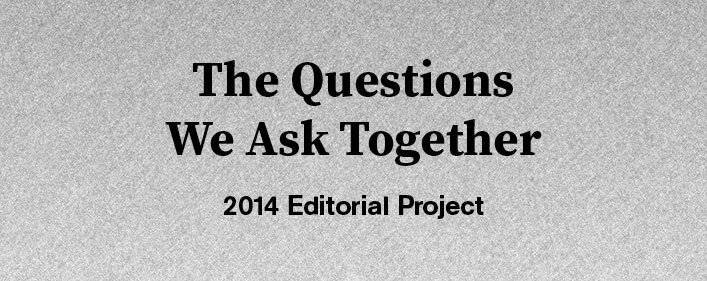Why are people so afraid of evaluation?
Social Anxiety is the fear of others, of being judged, scrutinized and evaluated by them. While I hate to problematize from the get-go, this question has to be complicated because the people, in the context of this blog, are not general but specific (“the wider field of Socially Engaged Art” say the blog editors) and the evaluative metrics being feared are non-existent. So before we give in to the notion that socially-engaged artists have social anxiety, it may be useful to think a little bit about the the ways in which art has been evaluated and how some of the other disciplines that socially-engaged art interacts with have been evaluated.
If you knew you were going to be hit by a car, would you avoid it?
That art has been commonly approached as ineffable, and therefore inherently beyond conventional evaluation, stands in sharp contrast to disciplines actually seeking out evaluation and begs the question: do artists want to be evaluated? Artists have given auto-assessments in statements and experimented with forms that resist assessment. The teaching of art has often incorporated evaluation, awkwardly in the form of grades and through the art critique that variously emphasize the object and the maker’s intention and/or biography depending on what tradition they come from: In a recent lecture James Elkins identified four historical models influencing how critiques have been conducted ranging from standardized criteria to deconstruction. Art critics have also worked to understand, describe and at times evaluate work, though the field is hardly in agreement about how and if that can be done.
If you knew you would make effective art, would you make it?
The disciplines of social science, to which socially-engaged art owes so many insights while also seeking its subversion, has within it it a profession known as “Evaluation”. Evaluation typically offers some feedback about a practice and the methods for obtaining that feedback can fall along scientific (think, the actual definition of experiment in the lab and not in art), quantitative or qualitative lines. But fundamental to any form of evaluation is consideration of who are the entity/persons asking, answering and receiving the questions being posed and what their value systems and goals are.
If you knew you were going to be judged by others, would you let them?
Following up on the provocations of his recent E-Flux essay dealing with the limitations of art criticism to grasp the sprawling nature of socially-engaged art, Grant Kester has been developing a new initiative addressing the gaps in evaluative methodologies to deal with “dialogical practices.” In conjunction with the Santa Monica Museum of Art’s upcoming exhibit “Citizen Culture: Art and Architecture Shape Policy” and in collaboration with Elana Zilberg (director of Studio for Ethnographic Design at at the University of California in San Diego), Kester explained to me that Art History graduate students are being teamed up with students from other disciplines to do field research and immerse themselves in the time and place and political context of the work.
Artists of the 20th Century were instrumentalized by the state, contained by the presenting institution, professionalized by the academy, co-opted by the real estate developer and neutralized by the philanthropic foundation’s management of past generation’s attempts to develop arts non-profits––all inflected with their own value systems and goals. At this particular juncture in history, we have the choice to continue sampling those forms of organization and affiliation, or to consider what options are afforded in the present. As art practices become more and more enmeshed in the social world, witnesses to its presence will begin asking what it really does. As artists continue to be preoccupied with transforming the social world in which we exist, we will have to deepen our self-consciousness around the intentionality, value systems and goals that drive our work.
About the contributor: Daniel Tucker works as an artist, writer and organizer developing documentaries, publications and events inspired by his interest in social movements and the people and places from which they emerge. His writings and lectures on the intersections of art and politics and his collaborative art projects have been published and presented widely. Tucker recently earned an MFA from University of Illinois at Chicago and has recently been teaching a series of adult education seminars on Chicago Political Art. In addition to his work on the Never The Same Chicago art oral history and archive project with Rebecca Zorach, he is currently at work on editing the book Immersive Life Practices (SAIC, 2014), co-organizing An Artists’ Congress with the Block Museum at Northwestern University, and producing a series of projects about the ideological spectrum while in residence at Grand Central Art Center in Santa Ana, CA. miscprojects.com
